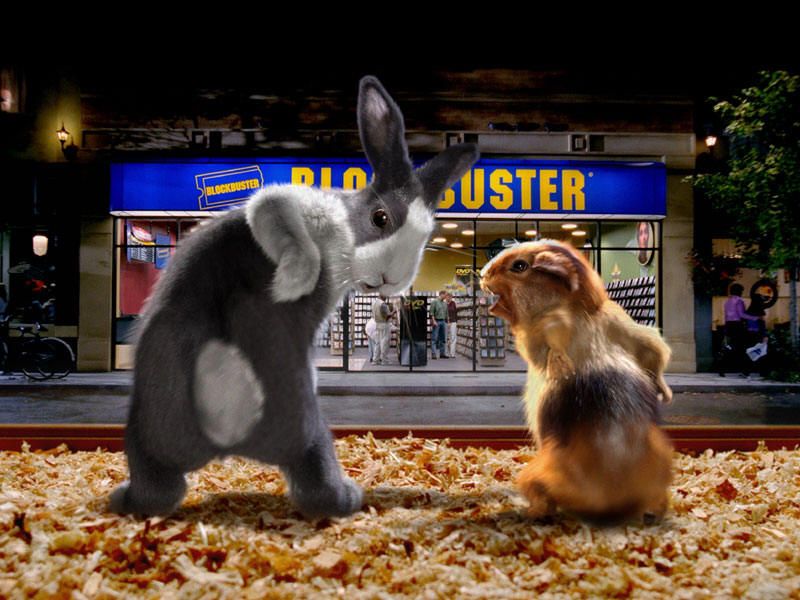.jpg) According to the Bureau of Labor Statistics, 61.2 million Americans volunteered last year. Why do people volunteer? Doing something good for others make you feel good and perhaps it can even make you live longer.
According to the Bureau of Labor Statistics, 61.2 million Americans volunteered last year. Why do people volunteer? Doing something good for others make you feel good and perhaps it can even make you live longer.That is the theory behind a new book called "Why Good Things Happen to Good People: The Exciting New Research That Proves the Link Between Doing Good and Living a Longer, Healthier, Happier Life" by Stephen Post, a professor of bioethics at Case Western Reserve University's School of Medicine and co-writer Jill Neimark. Stephen Post created the Unlimited Love Institute at Case Western Reserve University with a generous grant from Sir John Templeton, the pioneer of globally diversified mutual funds. To learn more about the Institute for Research on Unlimited Love at Case Western Reserve Medical School, visit http://www.unlimitedloveinstitute.org/aboutus/index.html According to Post, there's a direct connection between altruism and physical health.
Last weekend, I attended the Animal Rights 2007 National Conference http://www.arconference.org/ which was held at the Westin Hotel in Los Angeles, CA. I am a vegetarian and I volunteer at a number of different animal rescue organizations, but this was my first animal rights conference. Contrary to what you might expect, almost everyone at the conference looked very normal. Of course, many of the T-shirts I saw sported thought-provoking messages such as "Ask me why I don't eat meat," "I do not eat my friends" with a picture of farm animals right below the caption and "Yes, I get enough protein. Yes, I have a life."
Until I attended the conference, I had no idea that there are special organizations devoted to the protection of chickens (United Poultry Concerns http://www.upc-online.org/ and Eastern Shore Chicken Sanctuary http://www.bravebirds.org/), monkeys and primates (Jungle Friends Primate Sanctuary http://www.junglefriends.org/ and International Primate Protection League http://www.ippl.org/), sea turtles (Sea Turtle Restoration Project http://www.bapd.org/gseoct-1.html), tortoises (American Tortoise Rescue http://www.tortoise.com/), bears in Asia (Animals Asia Foundation http://www.animalsasia.org/), just to name a few.
I also learned about frightening, tragic stories about animals used at popular tourist destinations such as Six Flags Discovery Kingdom in Vallejo, CA, Wild Animal Park in Escondido, CA, Seaworld in San Diego, CA, Ringling Brothers Barnum and Bailey Circus. All wild animals are captured against their will and "trained" (broken of their wild habits) with methods of food deprivation and or physical punishment. "Trainers" call this "positive reinforcement." To learn more about animal abuse in circuses, please visit http://www.peta.org/mc/factsheet_display.asp?ID=66 But circuses are not the only guilty culprits. To learn more about animal abuse at Six Flags Discovery Kingdom, visit http://ga0.org/campaign/sixflags_2 To learn more about animal abuse at Wild Animal Park visit http://www.10news.com/news/13531740/detail.html
Dolphins appear to be having fun while performing. At this point they have already been taken away from their families and their natural environments. They have been broken of "wild" habits, are kept in chlorinated pools, and fed frozen fish. They are ignored the majority of the day and only given attention at show times. To learn more about dolphin abusement parks and captive deaths, visit the following sites:
To learn more about animal abuse in marine parks such as Seaworld, please visit http://www.downbound.com/Marine_Parks_s/429.htm
Here are some of the arguments against using animals in entertainment:- It teaches children dominance and to take pleasure in humiliating others
- Animals DO feel pain. They do suffer psychological disorder. And they are typically trained through food deprivation and physical abuse.
- Studying animals in captivity is akin to studying human beings in prison.
- Captive breeding serves no purpose "for the animals" if there is no wild habitat left for reintroduction. It only serves human interest.
- Tradition implies the illusion of permanence. It was once traditional to keep human slaves as well.
Source: Tim Gorski at timgorski@rattlethecage.org
Before you consider visiting an animal that uses animals for entertainment purposes, please visit these sites and do some research!
On a more upbeat note, I came away from the conference, feeling inspired to start my own animal rescue organization someday. Since there are plenty of cat and dog shelters in my area, I would like to focus on rescuing unwanted guinea pigs in the East Bay. My three guinea pigs, Stanley, Olly and Munchy, were all adopted from animal rescue organizations. I adopted my first guinea pigs, Stanley and Olly, from the San Francisco SPCA http://www.sfspca.org/home.shtml whereas Munchy came from the Peninsula Humane Society & SPCA http://www.peninsulahumanesociety.org/ Since guinea pigs also make good animal-assisted therapy partners, I plan to continue performing animal-assisted therapy work using rescued guinea pigs who have mellow temperaments like Stanley who accompanies me on visits to senior centers in San Francisco and the East Bay. If you have a mellow dog, cat, guinea pig or rabbit who might be a good candidate for animal-assisted therapy work, visit the Delta Society web page at http://www.deltasociety.org/home.htm
There is a guinea pig rescue organization in San Mateo, CA called Cavy Spirit. Cavy Spirit is a private home which takes in abandoned guinea pigs and places them in high quality, permanent homes. To learn more, please visit http://www.cavyspirit.com/ Although I did not adopt any guinea pigs from Cavy Spirit, I visited the owner's home and was quite impressed by the elaborate housing arrangements she created for the guinea pigs in her care. She sold me the Coroplast which I used to create a huge cage for Stanley, Olly and Munchy.
I am also very fond of rabbits, but there is a rabbit rescue organization in Richmond, CA called the House Rabbit Society http://www.rabbit.org/ and there's SaveABunny http://www.saveabunny.org/ in Mill Valley, CA. The founder of Eastern Shore Chicken Sanctuary http://www.bravebirds.org/ in Princess Anne, MD, brought up a very good point at the Animal Rights 2007 Conference: "Volunteer where the greatest need exists." She explained that she's a dog lover, but there were plenty of cat and dog shelters in her area, but nobody was doing anything about the chickens. So she created a chicken sanctuary.
I haven't finished reading the book "Why Good Things Happen to Good People" yet, but it makes sense to me that there may be a direct connection between altruism and physical health. My husband claims that I volunteer primarily because it makes me feel good and he's right. I feel good helping others, but that's not the only reason. I also think it's the right thing to do. I want my actions to help those who cannot speak for themselves. If you already volunteer for a nonprofit organization, good for you! Keep up the good work! If you do not volunteer for a nonprofit organization, please consider doing so--even if you can only devote an hour a week. We're only on this planet once so why not try to make a difference in the life of someone else while we still can? Mahatma Gandhi once proclaimed, "We must be the change we wish to see in the world." These wise words have long been echoed by many of history's most progressive thinkers. I will conclude with a quote from Mother Teresa who once said, "We can do no great things; only small things with great love." I invite all of you to go forth and find the small things you can do with great love. . .




No comments:
Post a Comment